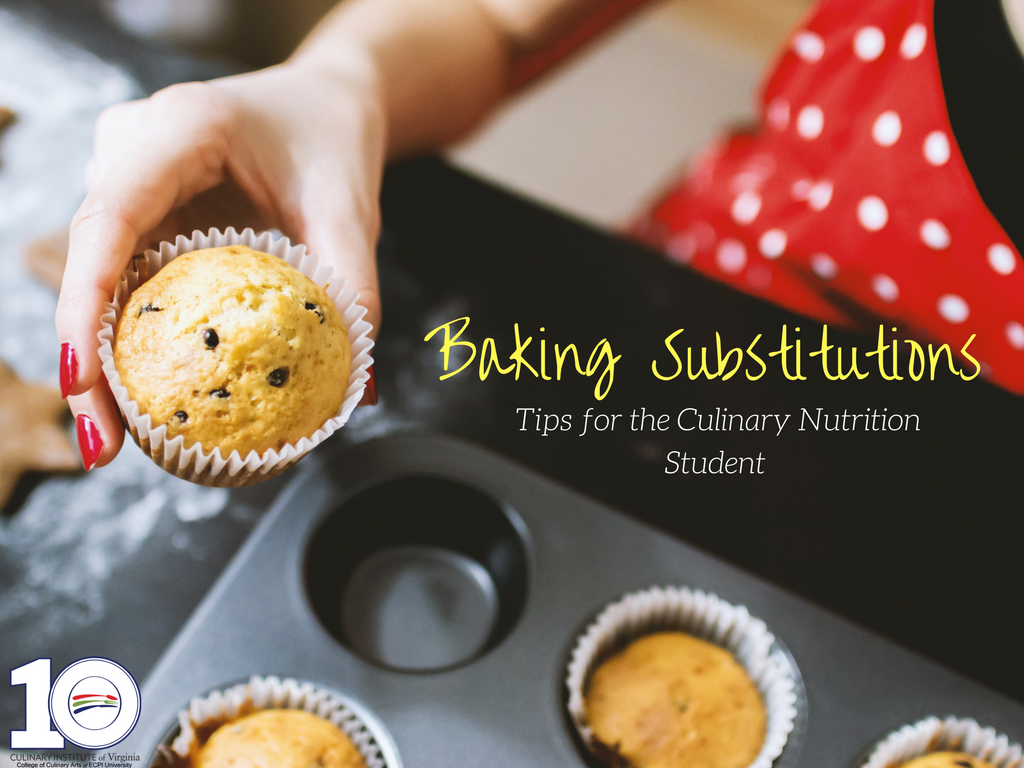Baking Substitutions for Culinary Nutrition Students
If you intend to go into culinary nutrition for a career, you know that you'll need to develop a repertoire of recipes and cooking techniques to increase your chances of finding work. One type of cooking that is in high demand and that will continue to grow in popularity, is being able to cook for people with food allergies and special diet requirements like heart-healthy, celiac, and more. Baking for these people requires more than just a knowledge of substitutions, though. Check out these four tips for baking for special diets.
Watch for Name Variations
The current food system is set up so that many components of foods have been isolated and mixed into other foods as stabilizers, flavors, and more. This means you have to watch out for different names in order to avoid potential problems. For example, someone with a milk allergy needs to avoid foods with casein in them. You might think that all you have to do is avoid overt dairy foods to avoid casein, but casein is also used as an additive in some nondairy creamers.
Another example is gluten, a protein found in wheat. You can't just avoid wheat and be fine. Gluten is found in foods like soy sauce and can also be a component of the "natural flavors" you often see on labels of foods that don't contain other wheat products. If you were making gluten-free food, you'd have to watch out for gluten in ingredient lists everywhere.
Experiment First
Always play around with a substitute first to find out exactly how it reacts with the other ingredients you use. While the overall recipe may be sound, you may have ingredients that vary a bit in composition from what the recipe creator used, such as a higher-protein flour used in a Danish. These small variations may require you to adjust liquid levels or mix ingredients for a longer time, for instance.
One example of this is milk pudding. If you're trying to make a typical chocolate pudding for someone who can't have animal milk, unsweetened soy milk is often a fine substitute, and many recipes call for a 1:1 substitution. However, you may find that you have to cut the amount of soy milk by a small amount to get that same thick mouthfeel for the finished pudding because of the exact level of heat you're using on the stove. It seems insignificant at first, but it really does have a noticeable effect.
Pay Attention to Cross-Contamination
Always keep your baking stations separate and beware cross-contamination when baking for different dietary requirements. All the gluten-free ingredients in the world are not going to help you if you bake gluten-containing goods using the same utensils and mats, with wheat flour flying around in the air. Cross-contamination can also occur on the manufacturer side, which is why oats can be a problem for people with celiac disease or wheat allergies -- the oats themselves don't contain wheat or gluten, but the processing equipment they sit on often does, contaminating the batch. Take cross-contamination seriously and set aside a separate, isolated area to make foods that have to eliminate a particular ingredient.
Sample Substitutions
Get creative with sample substitutions, but try to stick to recognizable ingredients. For example, applesauce often works in place of eggs for binding, which is helpful for someone with an egg allergy. Applesauce also works in place of part of the oil or butter in a recipe (it provides moisture without the fat), which is great if you're trying to make a low-fat baked good for someone dealing with heart issues.
Milks are particularly easy to substitute. Instead of dairy milk, try soy, coconut, almond, cashew, and rice milk. The substitution amounts are very close to the amount of dairy milk needed in the original recipe.
Are you excited about alternative cooking and creating recipes that call for health ingredients? If you would like to learn more about ECPI University's Associate of Applied Science Degree in Culinary Arts and Applied Nutrition, don't hesitate. Call today and talk to a helpful admissions advisor about your options!
It could be the Best Decision You Ever Make!
DISCLAIMER – ECPI University makes no claim, warranty, or guarantee as to actual employability or earning potential to current, past or future students or graduates of any educational program we offer. The ECPI University website is published for informational purposes only. Every effort is made to ensure the accuracy of information contained on the ECPI.edu domain; however, no warranty of accuracy is made. No contractual rights, either expressed or implied, are created by its content.
Gainful Employment Information – Culinary Nutrition - Associate’s
For more information about ECPI University or any of our programs click here: http://www.ecpi.edu/ or http://ow.ly/Ca1ya.





